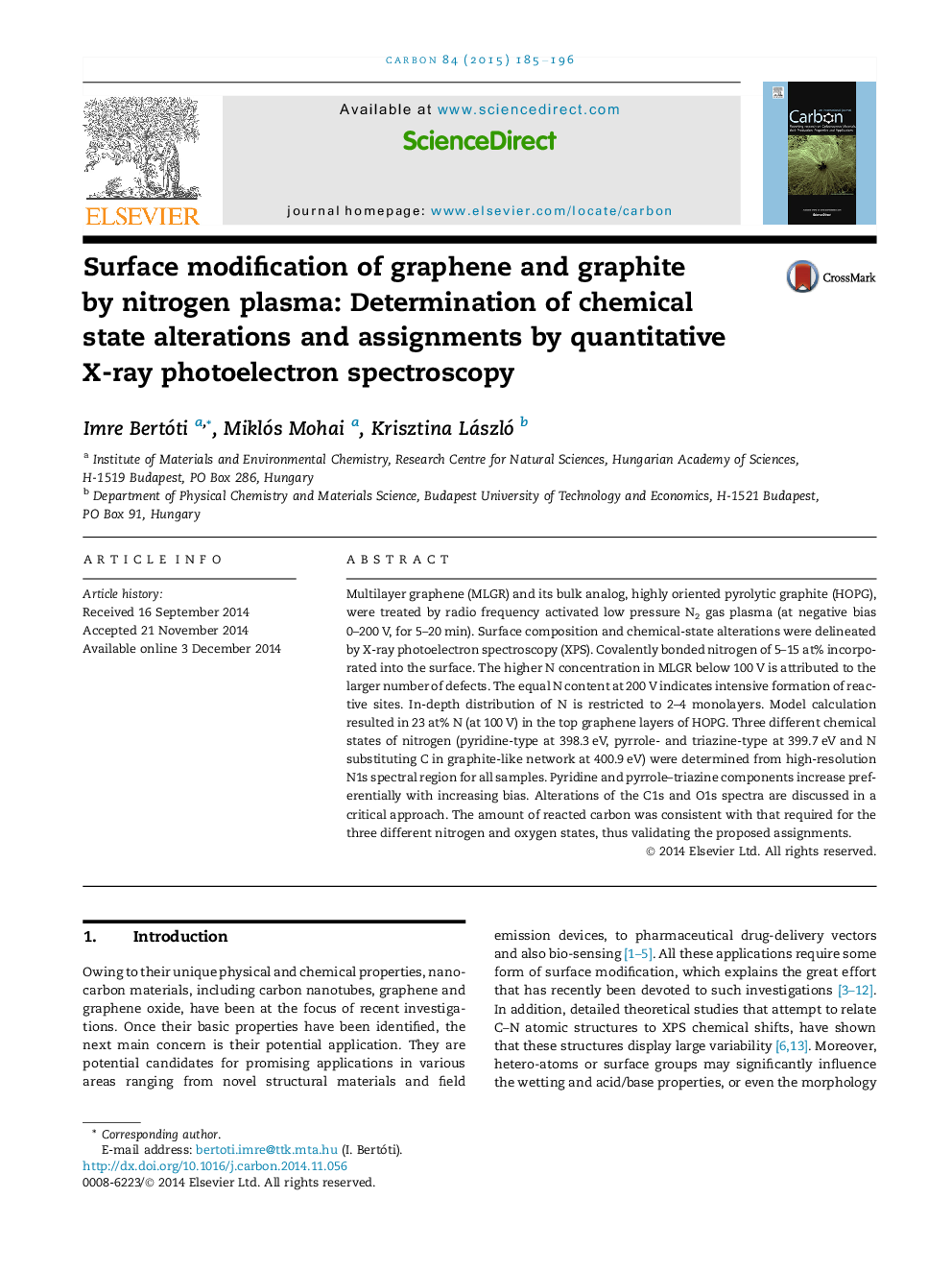| Article ID | Journal | Published Year | Pages | File Type |
|---|---|---|---|---|
| 7851927 | Carbon | 2015 | 12 Pages |
Abstract
Multilayer graphene (MLGR) and its bulk analog, highly oriented pyrolytic graphite (HOPG), were treated by radio frequency activated low pressure N2 gas plasma (at negative bias 0-200Â V, for 5-20Â min). Surface composition and chemical-state alterations were delineated by X-ray photoelectron spectroscopy (XPS). Covalently bonded nitrogen of 5-15Â at% incorporated into the surface. The higher N concentration in MLGR below 100Â V is attributed to the larger number of defects. The equal N content at 200Â V indicates intensive formation of reactive sites. In-depth distribution of N is restricted to 2-4 monolayers. Model calculation resulted in 23Â at% N (at 100Â V) in the top graphene layers of HOPG. Three different chemical states of nitrogen (pyridine-type at 398.3Â eV, pyrrole- and triazine-type at 399.7Â eV and N substituting C in graphite-like network at 400.9Â eV) were determined from high-resolution N1s spectral region for all samples. Pyridine and pyrrole-triazine components increase preferentially with increasing bias. Alterations of the C1s and O1s spectra are discussed in a critical approach. The amount of reacted carbon was consistent with that required for the three different nitrogen and oxygen states, thus validating the proposed assignments.
Related Topics
Physical Sciences and Engineering
Energy
Energy (General)
Authors
Imre Bertóti, Miklós Mohai, Krisztina László,
